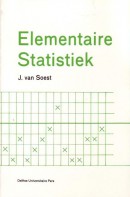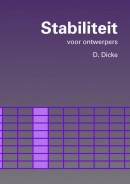Product informatie
- ISBN 9789065623614
- ISBN 10 9065623612
- Druk 4
- Bindwijze Paperback
- Taal Engels
- Uitgever VSSD
- Onderwerp Materiaalkunde
- Beschikbaar sinds 3 November 2014
Samenvatting
Life Cycle Assessment (LCA) is a well-defined method to calculate the environmental burden of a product or service. However, LCA has been made (needlessly?) so complex that it seems to be a job for specialists only. The specialists jargon ('functional unit', 'fate analysis', 'midpoints', 'endpoints', 'attributional modelling', etc.) makes it even more impossible for non-specialists to find out what they need to know to make an LCA. The recent LCA manual of the International Reference Life Cycle Data System of the EU is an excellent document for those people who like to become expert. The focus is on all the (theoretical) aspects of LCA: 80% of the text is on how to make an LCI (Life Cycle Inventory) and perform the Life Cycle Interpretation, ... including data quality checks and formalities on the reporting. However, the vast majority of students, designers, architects and business managers (and their consultants) never make LCI emission lists, nor write extensive reports on the interpretation. Most of them apply LCIs of databases of other parties (like the Ecoinvent database), apply existing single indicator systems (like eco-costs, carbon footprint, CED, BEES, Recipe, etc.), and draw simple conclusions on what seems to be the best solution in terms of environmental burden. Students tend to make LCAs by using computer software. They quickly learn how the input works, regard the calculation as a black box, and watch how the output varies with the input. Basically, they make the LCA by instinct and common sense. However, not all students are equal: some appear to have a much better instinct and common sense than others. Some issues in LCA are too complex to be tackled by common sense only. So these people need a little help and practical guidance. When I realized the abovementioned situation, I decided to write this Practical Guide to LCA, starting with the common sense, and build on it with practical solutions for, sometimes, complex issues (like recycling). The examples are given in eco-costs; however, most of the examples are identical for other single indicators, like BEES, Ecological Scarcity, Ecoindicator 99, Recipe, Carbon Footprint, etc. After two years of intensive use of the First Edition, the Second Edition as issued, with two extra issues: how to define the Functional Unit and the Declared Unit, and how to structure recycling calculations. The Third Edition is based on eco-costs 2012 data.
Meer boeken van uitgever VSSD
Meer boeken met de onderwerpen Materiaalkunde
Veel gestelde vragenmeer antwoorden
Hoe werkt Resale.nl?
Je kunt op de website advertentie(s) plaatsen van de boeken die u wilt verkopen. Een potentiële koper neemt dan contact met je op om samen een prijs af te spreken en de transactie verder af te handelen. Houdt hierbij onze aanbevelingen voor een veilige transactie in gedachten en voorkomt dat je slachtoffer wordt van oplichting.
Hoe kom ik in contact met de verkoper?
Je kunt een reactie versturen door bij de betreffende advertentie van de verkoper op de knop ‘doe een bod’ te drukken. Je kunt nu een bod doen op de advertentie en een persoonlijk bericht toevoegen. Het verstuurde bod brengt je in contact met de verkoper via e-mail.
Wat zijn de kosten voor het verkopen van mijn studieboeken?
Je kunt geheel gratis gebruik maken van de diensten van Resale.nl. Resale.nl haalt zijn inkomsten uit advertenties.
Hoe kan ik een boek kopen?
Resale.nl werkt globaal op de volgende manier:
- Zoek via het zoekveld het studieboek dat je wilt kopen.
- Uit de zoekresultaten kies je het studieboek waar je geïnteresseerd in bent.
- Op de detailpagina van het studieboek kun je een overzicht vinden van de personen die het studieboek verkopen.
- Je kunt nu een bod plaatsen door op de button te klikken. Het bod wordt via e-mail aan de verkoper verzonden.
- De verkoper van het studieboek neemt contact met je op door een reactie te geven op het bod dat je hebt verzonden. Met de verkoper kun je gezamenlijk een prijs afspreken. Houdt hierbij onze aanbevelingen voor een veilige overdracht in gedachten en voorkom dat u slachtoffer wordt van oplichting.
Hoe weet ik wat ik koop?
Om te achterhalen of wat je koopt ook daadwerkelijk is wat er wordt geadverteerd is het verstandig om bij de verkoper langs te gaan en het aangebodene te bezichtigen. Doe je dit niet, dan loopt je een zeker risico. Onder het kopje ‘Hoe kan ik de kans op misbruik verkleinen’ kun je meer over dit onderwerp vinden.
Kopers over Resale.nl
bart van gijsel
"Ik ben erg tevreden over deze verkoper de familie thus. Goede snelle levering."
Patrice Michel
"De verkoper heeft er alles aan gedaan om het door mij bestelde product zo snel mogelijk naar mij toe te krijgen. Heeft me van iedere stap op de hoogte ..."
marjolein
"Besteeling snel bezorg, in goede staat net zoals beschrijving en goede communicatie met verkoper!"
marjolein
"Goed contact, snel en in goede orde ontvangen. Staat van het boek was zo goed als nieuw!"
hilda1
"goede medewerking en hulp dank u wel"
Tineke
"Het bestelde werd netjes en snel afgeleverd. De prijs was goed."
stacy
"Goed verpaktBoek ziet er mooi uit"
elisa
"Goede levering alleen jammer dat er niet bij was gezet dat er al in geschreven was"
Elly
"Verkoper reageerde snel op mijn emails en heeft ook het boek snel opgestuurd.Het boek was niet van nieuw te onderscheiden. Was waarschijnlijk niet gebruikt. ..."
Gerard+[2]
"Prettig contact gehad en goed zaken kunnen doen."















